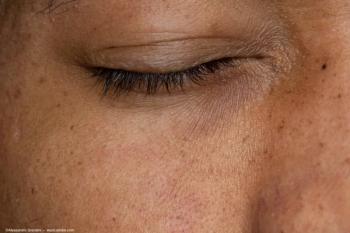
Implantable telescope may help patients with bilateral macular degeneration
An implantable miniature telescope (IMT, VisionCare Ophthalmic Technologies Inc.) may help improve visual acuity in patients with bilateral, end-stage macular degeneration, according to the phase II/III results at 6 months.
New Orleans-An implantable miniature telescope (IMT, VisionCare Ophthalmic Technologies Inc.) may help improve visual acuity in patients with bilateral, end-stage macular degeneration, according to the phase II/III results at 6 months.
The device is implanted in only one eye to help the patient with central vision tasks. The other eye without the telescope helps the patient with peripheral vision. The IMT has an optic that measures 3.6 mm in diameter and 4.4 mm in length and its overall length with haptics is 13.5 mm. It is inserted through a 10- to 12-mm limbal incision and positioned within the capsular bag, reported Paul R. Lichter, MD, during the American Academy of Ophthalmology annual meeting.
Patients included in the study had to have bilateral, stable, and untreatable age-related macular degeneration, geographic atrophy, or Stargardt's disease. All patients had to have a cataract in their study eye. Their best-corrected visual acuity had to be between 20/80 and 20/800, Dr. Litchter noted.
At the 6-month point, 206 out of 217 eyes were successfully implanted with the IMT. Only the successful implanted eyes were included in the study analysis, he said.
In this patient population, 89% had a greater than or equal to 2-line improvement in near or distance vision.
"This efficacy exceeded the 50% goal of greater than or equal to 2-line improvement set at the beginning of the study," Dr. Lichter said.
There were no retinal complications and no corneal decompensation at 6 months follow-up. However, the mean endothelial cell loss at 6 months was 22%, exceeding the study's goal of 17%, he said.
"The IMT implantation is about three times more difficult than a cataract procedure," Dr. Lichter said. "The early postoperative complications are manageable and safe explantation is possible."
Patient selection is critical and patients have to have realistic expectations.
"Patients need to understand that this is not a cure and optical outcome requires fairly intense visual rehabilitation in order to achieve functional goals," Dr. Lichter said.
VisionCare Ophthalmic Technologies expects to file for a premarket approval at the 12-month data point in early 2005, he said.
Newsletter
Don’t miss out—get Ophthalmology Times updates on the latest clinical advancements and expert interviews, straight to your inbox.


















































.png)


